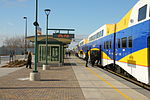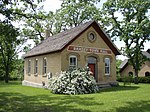Anoka Metro Regional Treatment Center
Anoka-Metro Regional Treatment Center (AMRTC), located in Anoka, Minnesota, the county seat of Anoka County, provides inpatient and transitional services to patients with severe mental illness from the Twin Cities metropolitan area (Anoka, Carver, Dakota, Hennepin, Ramsey, Scott, Sherburne and Washington County). Due to overcrowding, some patients will be transferred to St. Peter's Regional Treatment Center; This is done by random selection upon intake. The facility was previously the Anoka Asylum and in 1937 the name was changed to the Anoka State Hospital. The hospital provided care for mentally ill men starting in 1900 and for women in 1906. As a hospital for the mentally ill, until 1999, it housed thousands of patients, both male and female. It was once again renamed in 1985 to the current name.
Excerpt from the Wikipedia article Anoka Metro Regional Treatment Center (License: CC BY-SA 3.0, Authors).Anoka Metro Regional Treatment Center
Rum River Regional Trail,
Geographical coordinates (GPS) Address Nearby Places Show on map
Geographical coordinates (GPS)
| Latitude | Longitude |
|---|---|
| N 45.215277777778 ° | E -93.380833333333 ° |
Address
Rum River Regional Trail
55316
Minnesota, United States
Open on Google Maps










